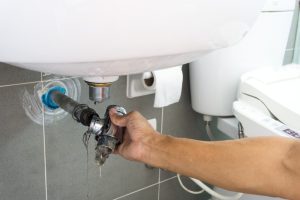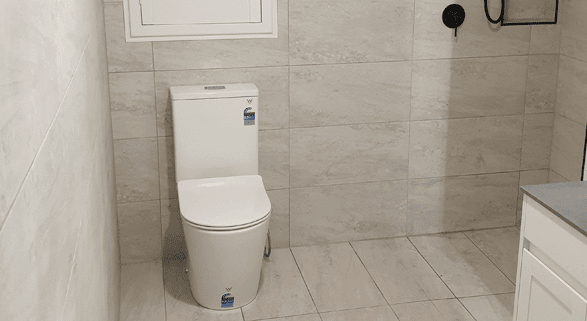Common Toilet Plumbing Problems and How to Fix Them
Toilet plumbing problems are an unfortunate but common part of home maintenance. Whether you’re dealing with a simple clog or a major leak, addressing toilet issues quickly can prevent more severe damage to your plumbing system. In this article, we’ll explore some of the most common toilet plumbing problems and provide you with step-by-step solutions to fix them.
1. A Clogged Toilet
One of the most common toilet plumbing issues is a clogged toilet. This problem is usually caused by flushing too much toilet paper, non-flushable items, or even a buildup of debris over time. If your toilet bowl doesn’t drain properly or backs up when flushed, you likely have a clog.
How to Fix a Clogged Toilet
Use a Plunger: Start by using a high-quality plunger to create a seal around the drain hole. Vigorously plunge up and down for several minutes to dislodge the clog. If the water drains after a few plunges, you’ve successfully removed the blockage.
Try a Toilet Auger: If plunging doesn’t work, use a toilet auger (also known as a plumbing snake) to reach deeper into the drain. Insert the auger into the toilet drain and rotate the handle to break up the obstruction.
Use a Natural Drain Cleaner: Pour a mixture of baking soda and vinegar into the toilet bowl. Let it sit for 15-20 minutes, then flush with hot water. This can help break down organic clogs naturally.
If these methods don’t work, it’s best to call a plumber to avoid causing damage to your toilet.
2. Running Toilet
A running toilet occurs when water continues to flow into the toilet bowl, even when the flush handle isn’t pressed. This problem is often caused by a faulty flapper, a worn-out fill valve, or an improperly adjusted float.

How to Fix a Running Toilet
Check the Flapper: The flapper is a rubber valve at the bottom of the toilet tank that controls the flow of water into the bowl. If it’s damaged or doesn’t seal properly, water will continue to leak into the bowl. Replace the flapper if necessary.
Adjust the Float: The float regulates the water level in the tank. If it’s set too high, it will cause the toilet to keep filling. Adjust the float arm to ensure the water level is about an inch below the overflow tube.
Inspect the Fill Valve: A malfunctioning fill valve may cause the tank to overfill and lead to constant running. If adjusting the float doesn’t work, consider replacing the fill valve.
3. Toilet Leaks
Toilet leaks are another common plumbing issue that can lead to water damage in your bathroom and increased water bills. Leaks can occur from the base of the toilet or inside the tank.
How to Fix a Toilet Leak
Check the Tank Bolts: Tighten the bolts securing the toilet tank to the bowl. Sometimes, leaks can occur if these bolts are loose.
Inspect the Wax Ring: The wax ring is the seal between the toilet and the drain flange. If the ring is damaged or worn out, water can leak from the base of the toilet. Replace the wax ring by removing the toilet and installing a new one.
Examine the Tank-to-Bowl Connection: Leaks around the tank-to-bowl connection can also cause water to drip. Tighten any loose bolts or replace the rubber washers that form the seal.
4. Toilet Overflow
A toilet overflow occurs when water starts rising in the toilet bowl, often spilling over the rim. This can happen when there is a clog or when the fill valve malfunctions.
How to Fix a Toilet Overflow
Turn Off the Water Supply: Immediately turn off the water supply to prevent further water from flowing into the tank. The shut-off valve is typically located behind the toilet near the floor.
Clear the Clog: If the overflow is caused by a clog, use a plunger or a toilet auger to clear the drain. If the problem persists, check the drain for any blockages that may require professional help.
Check the Fill Valve: If the overflow is due to an overfilled tank, inspect the fill valve and float mechanism. Adjust the float to stop the water from filling above the overflow tube.
5. Weak Toilet Flush
A weak toilet flush can be frustrating and inefficient. If the water in the bowl doesn’t swirl properly or doesn’t flush all the waste away, there may be a problem with the toilet’s flushing mechanism or plumbing system.
How to Fix a Weak Toilet Flush
Clean the Rim Jets: The rim jets are small holes around the inside edge of the toilet bowl that release water during a flush. Over time, mineral deposits and grime can clog these holes, resulting in a weak flush. Clean the jets using a toilet brush or a mixture of vinegar and baking soda.
Check the Flush Valve: A faulty flush valve may not open properly, reducing the force of the flush. Inspect the valve and replace it if necessary.
Ensure Proper Water Pressure: Low water pressure in the toilet tank can result in a weak flush. Make sure the water supply valve is fully open and inspect the fill valve for any blockages.
6. Toilet Tank Problems
The toilet tank houses essential components such as the flush valve, fill valve, and float mechanism. If any of these parts malfunction, it can result in a variety of issues, including improper flushing, constant running, or poor water filling.
How to Fix Toilet Tank Problems
Replace the Fill Valve: If the tank is slow to fill or the water level is too low, replace the fill valve. This part controls the flow of water into the tank and should be replaced if damaged.
Replace the Flush Handle: If the flush handle becomes stiff or unresponsive, it may need to be replaced. A broken flush handle can prevent the toilet from flushing properly.
Adjust the Tank Water Level: The water level in the tank should be about an inch below the overflow tube. If the water level is too low or too high, adjust the float or fill valve accordingly.
7. Odors from the Toilet
Unpleasant odors coming from the toilet can indicate a plumbing problem. This issue is often caused by a clogged vent, a poor wax seal, or a sewer line problem.
How to Fix Toilet Odors
Check the Vent: A clogged vent stack can prevent air from escaping, leading to bad smells. Inspect the vent pipe on the roof and remove any debris.
Inspect the Wax Seal: If the wax seal around the base of the toilet is damaged, it can allow odors to escape. Replacing the wax seal can eliminate the smell.
Clean the Toilet Regularly: Regular cleaning and maintenance of your toilet, including the bowl, tank, and surrounding areas, can help prevent odors from developing.
Conclusion
Understanding the common toilet plumbing problems and knowing how to fix them can save you time, money, and frustration. Whether you’re dealing with a clog, a running toilet, leaks, or weak flushing, the solutions provided here can help restore your toilet’s functionality. However, if you’re unsure or the problem persists, don’t hesitate to call a professional plumber to avoid further complications.
By regularly maintaining your toilet and keeping an eye out for potential issues, you can prevent costly repairs and keep your plumbing system running smoothly.

